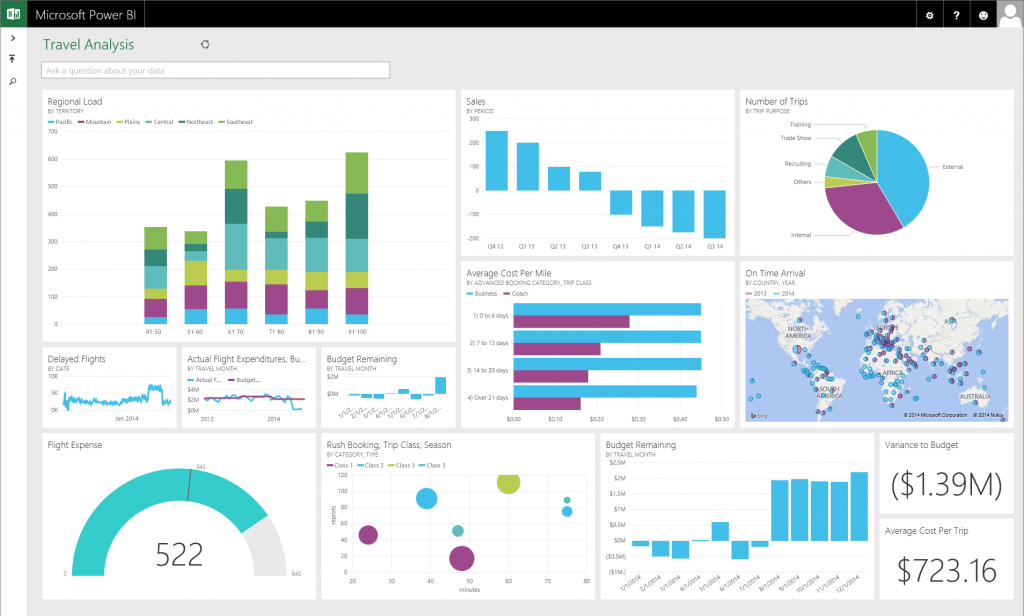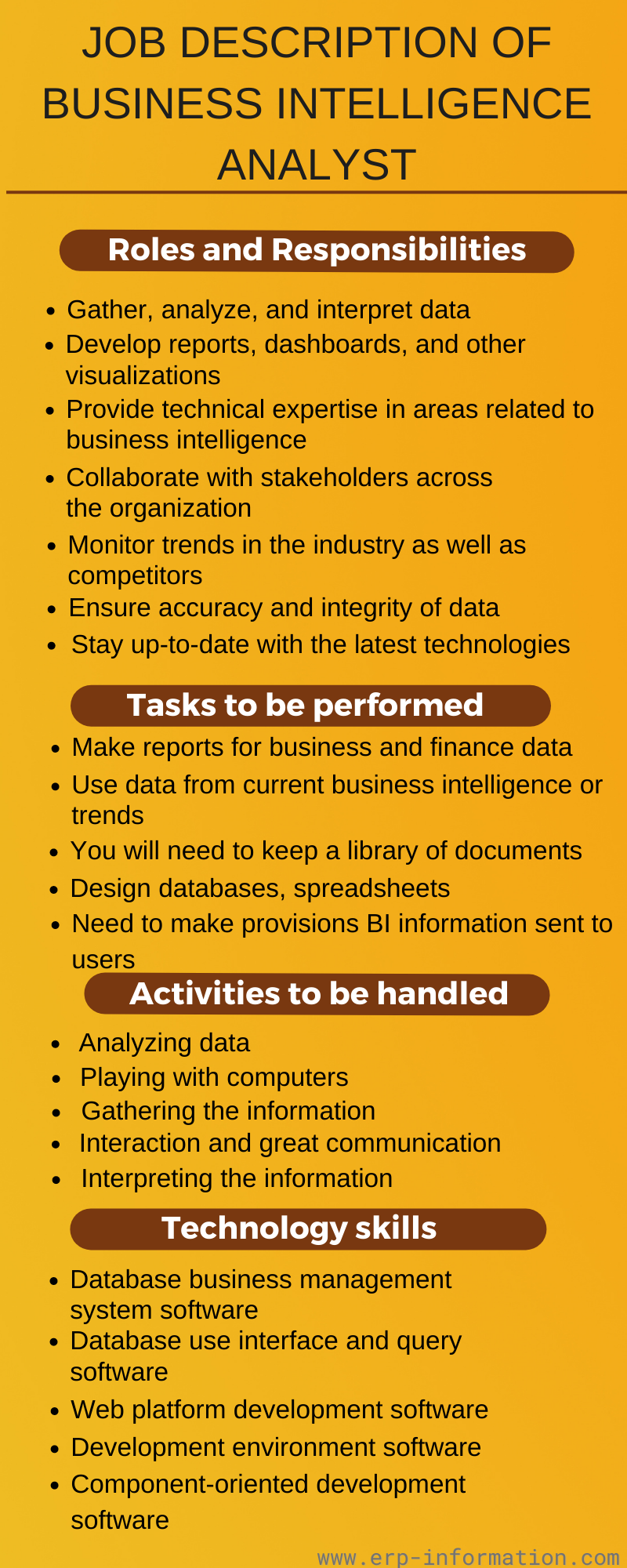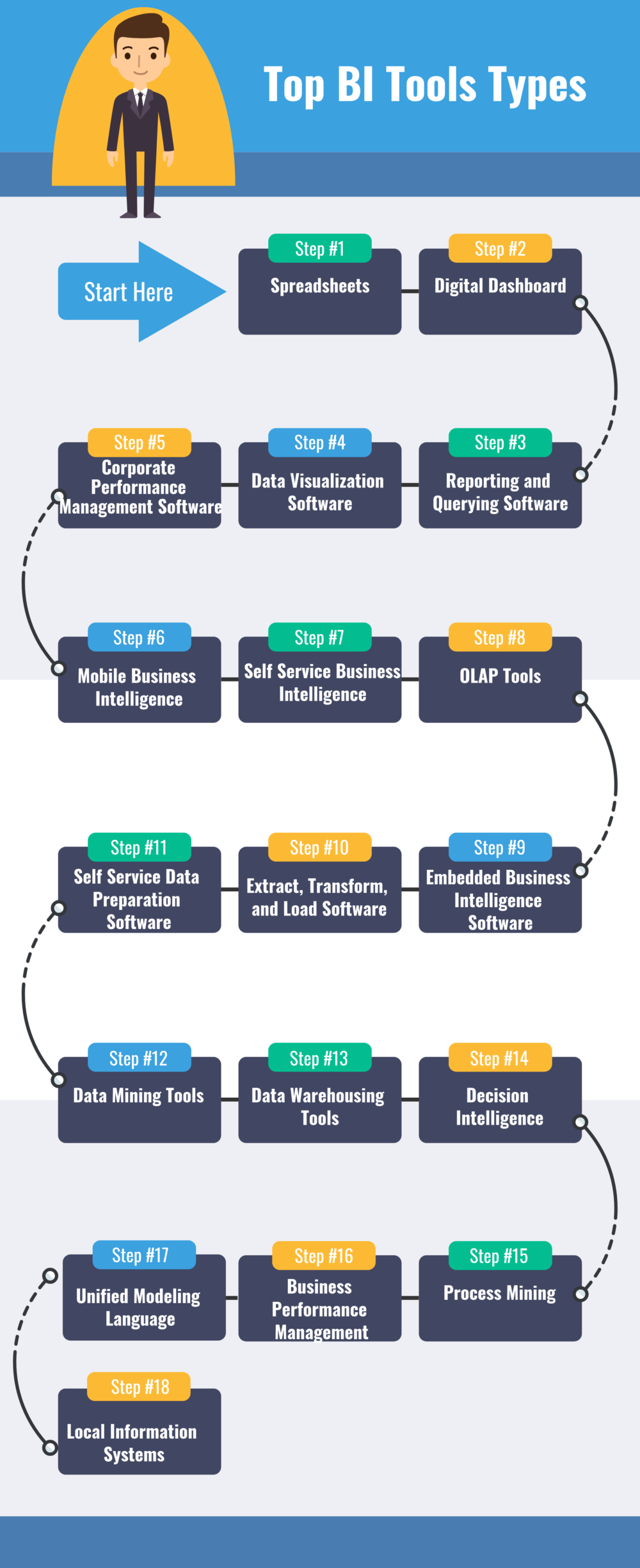Introduction
Hey there, savvy business buffs! Picture this: it’s crunch time, and you need to make a pivotal decision. But wait, you’re in the dark, fumbling with scattered data and gut feelings. That’s where business intelligence (BI) dashboards come in like a beacon of clarity. BI dashboards are like your trusty sidekick, whispering insider secrets and presenting data in a digestible, visual format. They’re the key to unlocking the treasures of your organization’s data, helping you make decisions that’ll send your business soaring through the stratosphere.
Unlocking the Power of Data
BI dashboards don’t just store data like a forgotten friend; they transform it into a symphony of insights. With interactive charts, graphs, and visualizations, they unveil hidden trends, patterns, and anomalies. It’s like having a superpower that lets you see your business from the eagle’s perspective. You can track key performance indicators (KPIs), monitor customer behavior, and identify areas for improvement. BI dashboards are the ultimate data detectives, uncovering hidden gems that can drive your business to success.
Custom-Tailored Insights
BI dashboards aren’t one-size-fits-all. They can be customized to fit your unique business needs and KPIs, ensuring you get the information that matters most. It’s like having a tailor-made suit for your data, crafted to perfection. Want to track sales by region? No problem! Need to monitor customer churn? Easy peasy! BI dashboards are your personal data Sherpas, guiding you through the treacherous terrain of business intelligence with precision and clarity.
Making Data-Driven Decisions
BI dashboards are the ultimate weapons in the arsenal of data-driven decision-making. With real-time insights at your fingertips, you can spot opportunities and seize them faster than a cheetah on the hunt. You’ll make informed decisions based on hard facts, not gut feelings or guesswork. It’s like having a crystal ball that shows you the future of your business. BI dashboards are the bridge between data and action, empowering you to transform insights into tangible results.
A Competitive Advantage
In today’s cutthroat business world, BI dashboards are not just a tool; they’re a competitive advantage. They give you the edge you need to stay ahead of the pack. By leveraging data and making informed decisions, you’ll outsmart your rivals and drive your business towards the pinnacle of success. BI dashboards are the secret weapon that will unlock your organization’s true potential and propel you to greatness.
**Business Intelligence Dashboards: Unveiling the Essence of Clarity and Control**
In today’s fast-paced business landscape, staying ahead requires a clear understanding of your company’s performance. Enter business intelligence dashboards, your personal compass for navigating the turbulent waters of data. These virtual control panels empower you with real-time insights, enabling you to make informed decisions and seize every opportunity.
**Benefits of Business Intelligence Dashboards**
1. **A Single Source of Truth:** Forget juggling multiple spreadsheets and reports. BI dashboards gather data from across your organization into a single, centralized view. This eliminates inconsistencies and provides a unified perspective on your company’s health.
2. **Customizable Snapshots of Success:** BI dashboards are not one-size-fits-all. They can be tailored to display the metrics that matter most to your business. From sales pipelines to marketing campaigns, you can create customized dashboards that provide a tailored view of your progress.
3. **Real-Time Insights for Quick Decision-Making:** Instead of waiting for time-consuming reports, BI dashboards deliver real-time updates. This empowers you to identify trends, spot anomalies, and respond swiftly to changing market conditions.
4. **Identify Patterns and Trends:** Dashboards help you spot patterns and trends that might otherwise go unnoticed in the sea of data. By visually presenting your metrics, you can uncover valuable insights into your customers, operations, and competitors.
5. **Collaboration and Communication Simplified:** BI dashboards foster collaboration within your team. By sharing real-time data, you can align goals, eliminate miscommunications, and keep everyone on the same page.
Business intelligence (BI) dashboards are powerful tools used by businesses to monitor and analyze their performance. These dashboards provide real-time insights into key metrics, enabling decision-makers to make informed decisions and improve operational efficiency. With the growing volume of data available to businesses, BI dashboards have become essential for staying competitive and driving success.
Types of Business Intelligence Dashboards
BI dashboards come in various types, each designed to meet specific business needs. The three main categories of BI dashboards are operational, analytical, and strategic.
Operational Dashboards
Operational dashboards provide real-time visibility into day-to-day operations. They are typically used by front-line employees and managers to monitor key performance indicators (KPIs) and make quick decisions. These dashboards often track metrics such as sales performance, customer satisfaction, and production output, empowering teams to identify and address issues as they arise.
Analytical Dashboards
Analytical dashboards are designed for data exploration and analysis. They allow users to drill down into data, identify trends, and uncover insights that can help improve decision-making. These dashboards typically include interactive features such as charts, graphs, and filters, enabling users to customize their view of the data and gain a deeper understanding of the underlying patterns.
Strategic Dashboards
Strategic dashboards provide a long-term view of a business’s performance. They are used by executives and senior managers to track progress towards strategic goals and make high-level decisions. These dashboards typically include metrics that measure overall business health, such as revenue growth, customer acquisition, and market share. By monitoring these metrics over time, businesses can identify areas for improvement and stay on track to achieve their long-term objectives.
Dashboards have become indispensable tools for businesses of all sizes, empowering them to make data-driven decisions. From tracking key performance indicators (KPIs) to monitoring customer behavior, dashboards provide a comprehensive view of an organization’s performance. But not all dashboards are created equal. Effective dashboards are designed with purpose, providing users with the insights they need to take action. We’ll delve into the key features that set effective dashboards apart, ensuring they’re not just eye candy but true decision-support systems.
Key Features of Effective Dashboards
Effective dashboards share several common characteristics that make them valuable decision-making aids. Let’s explore these key features in detail:
1. Customization: A one-size-fits-all approach doesn’t cut it when it comes to dashboards. Effective dashboards allow users to tailor the information they see based on their specific roles and responsibilities. Whether it’s adjusting the metrics displayed or filtering data by region, customization ensures each user gets the insights that matter most to them.
2. Interactivity: Dashboards aren’t just static displays; they’re dynamic tools that enable users to interact with data. By incorporating interactive elements like drill-down menus and hover-over tooltips, dashboards allow users to explore data in depth, uncovering hidden patterns and relationships.
3. Visual Appeal: The human brain is wired to process visual information quickly and efficiently. Effective dashboards leverage this by presenting data in visually appealing formats, such as charts, graphs, and maps. By making data visually accessible, dashboards make it easier for users to identify trends, spot anomalies, and draw meaningful conclusions.
4. Real-Time Data: In today’s fast-paced business environment, access to real-time data is critical. Effective dashboards are connected to live data sources, ensuring that users have the most up-to-date information at their fingertips. This real-time visibility allows businesses to respond quickly to changing market conditions and make proactive decisions.
5. Alerts and Notifications: Dashboards are not just passive data viewers; they’re also proactive alerting systems. By setting up alerts and notifications, users can be automatically notified when key metrics reach predefined thresholds. This ensures that critical information is not overlooked, allowing businesses to take timely action and mitigate potential risks.
Business Intelligence Dashboards: Empowering Data-Driven Decisions
In today’s data-driven business landscape, business intelligence dashboards have become indispensable tools, providing real-time insights that empower organizations to make informed decisions. These dashboards offer a comprehensive view of key performance indicators (KPIs), metrics, and trends, enabling businesses to monitor their performance, identify areas for improvement, and gain a competitive edge.
Purpose of Dashboards
Business intelligence (BI) dashboards are visual representations of data that present a concise and easy-to-understand snapshot of an organization’s performance. They are designed to help businesses track progress towards goals, identify bottlenecks, and make data-driven decisions that drive growth.
Types of Dashboards
Dashboards can be customized to meet the specific needs of an organization. Some common types include:
- Executive Dashboards: Provide a high-level overview of key performance indicators (KPIs) and metrics for senior management.
- Operational Dashboards: Monitor daily operations and provide insights into performance at the department or team level.
- Analytical Dashboards: Allow users to drill down into data and perform deeper analysis, identifying trends and patterns.
- Interactive Dashboards: Enable users to interact with data, such as filtering and sorting, to gain a more comprehensive understanding.
Benefits of Dashboards
Business intelligence dashboards offer numerous benefits to organizations, including:
- Improved decision-making: Real-time data insights empower decision-makers to make informed choices that drive business success.
- Increased efficiency: Dashboards consolidate data from multiple sources, saving time and effort in monitoring performance.
- Enhanced collaboration: Dashboards facilitate communication between departments, providing a shared view of data and insights.
- Proactive planning: Predictive analytics in dashboards help businesses anticipate future trends and prepare for challenges.
Use Cases
Dashboards are used in various industries to monitor performance, track trends, and identify opportunities. For example:
- Healthcare: Dashboards monitor patient outcomes, track inventory levels, and analyze patient satisfaction.
- Retail: Dashboards track sales performance, monitor customer behavior, and optimize marketing campaigns.
- Manufacturing: Dashboards monitor production levels, predict demand, and identify areas for improvement.
- Finance: Dashboards track financial performance, analyze investment portfolios, and manage risk.
- Customer Service: Dashboards monitor call center performance, track customer satisfaction, and identify areas for improvement.
- Human Resources: Dashboards track employee performance, analyze hiring trends, and manage payroll.
What Are Business Intelligence Dashboards?
Business intelligence dashboards are visual representations of data that provide insights into an organization’s performance. They are designed to help decision-makers quickly and easily understand key metrics and trends, enabling them to make informed decisions. Dashboards can be customized to display a variety of data, such as sales figures, customer demographics, and operational performance. By aggregating data from multiple sources, dashboards provide a comprehensive view of an organization’s operations, making it easier to identify areas for improvement and make strategic decisions.
Benefits of Business Intelligence Dashboards
Business intelligence dashboards offer numerous benefits to organizations, including:
- Improved decision-making: Dashboards provide decision-makers with the data they need to make informed decisions. By presenting data in a clear and concise format, dashboards help decision-makers quickly identify trends, patterns, and outliers, enabling them to make data-driven decisions.
- Increased efficiency: Dashboards can help organizations improve efficiency by providing real-time insights into performance. By eliminating the need to manually collect and analyze data, dashboards save time and resources, allowing organizations to focus on more strategic initiatives.
- Enhanced collaboration: Dashboards can facilitate collaboration by providing a shared view of data. By sharing dashboards with stakeholders, organizations can ensure that everyone is on the same page and working towards common goals.
- Improved customer satisfaction: Dashboards can help organizations improve customer satisfaction by providing insights into customer behavior and preferences. By understanding customer needs, organizations can develop products and services that better meet their expectations.
Types of Business Intelligence Dashboards
There are many different types of business intelligence dashboards, each designed to meet specific needs. Some of the most common types include:
- Operational dashboards: Operational dashboards provide real-time insights into an organization’s day-to-day operations. They are typically used by managers and supervisors to monitor key performance indicators (KPIs) and identify areas for improvement.
- Tactical dashboards: Tactical dashboards provide insights into an organization’s performance over a longer period of time. They are typically used by middle managers and executives to make tactical decisions and develop strategies.
- Strategic dashboards: Strategic dashboards provide insights into an organization’s long-term performance. They are typically used by executives to make strategic decisions and develop long-term plans.
How to Implement Business Intelligence Dashboards
Implementing business intelligence dashboards can be a complex process, but there are some key steps that can help make it successful:
- Define your objectives: The first step in implementing a business intelligence dashboard is to define your objectives. What do you want to achieve with the dashboard? What data do you need to track? Once you have a clear understanding of your objectives, you can start to design the dashboard accordingly.
- Gather data: The next step is to gather the data you need to track. This data can come from a variety of sources, including internal systems, external data sources, and manual data entry. Once you have gathered the data, you need to clean and prepare it for use in the dashboard.
- Design the dashboard: The next step is to design the dashboard. The dashboard should be designed to be easy to read and understand, and it should provide the insights you need to make informed decisions. When designing the dashboard, it is important to consider the following:
- The audience for the dashboard
- The data that will be displayed on the dashboard
- The layout of the dashboard
- The colors and fonts used on the dashboard
- Deploy the dashboard: Once the dashboard is designed, it needs to be deployed. The dashboard can be deployed on a variety of platforms, including web, mobile, and desktop. Once the dashboard is deployed, you need to train users on how to use it.
- Monitor and maintain the dashboard: Once the dashboard is deployed, it is important to monitor and maintain it. This includes keeping the data up-to-date, refreshing the dashboard regularly, and making changes as needed.
Best Practices for Using Business Intelligence Dashboards
There are a few best practices that can help you get the most out of your business intelligence dashboards:
- Use the right data: The data you use in your dashboard should be relevant to your objectives. It should also be accurate and up-to-date.
- Design the dashboard for your audience: The dashboard should be designed to meet the needs of your audience. Consider their level of expertise and their decision-making needs.
- Keep the dashboard simple: The dashboard should be easy to read and understand. Avoid cluttering the dashboard with too much data or too many visuals.
- Refresh the dashboard regularly: The dashboard should be refreshed regularly to ensure that the data is up-to-date. This will help you make informed decisions.
- Monitor the dashboard: The dashboard should be monitored regularly to ensure that it is performing as expected. This will help you identify any issues and make necessary adjustments.
Conclusion
Business intelligence dashboards are powerful tools that can help organizations make data-driven decisions and gain a competitive advantage. By following the best practices outlined in this article, you can implement and use business intelligence dashboards to improve your organization’s performance.
Saran Video Seputar : business intelligence dashboards




Leave a Reply